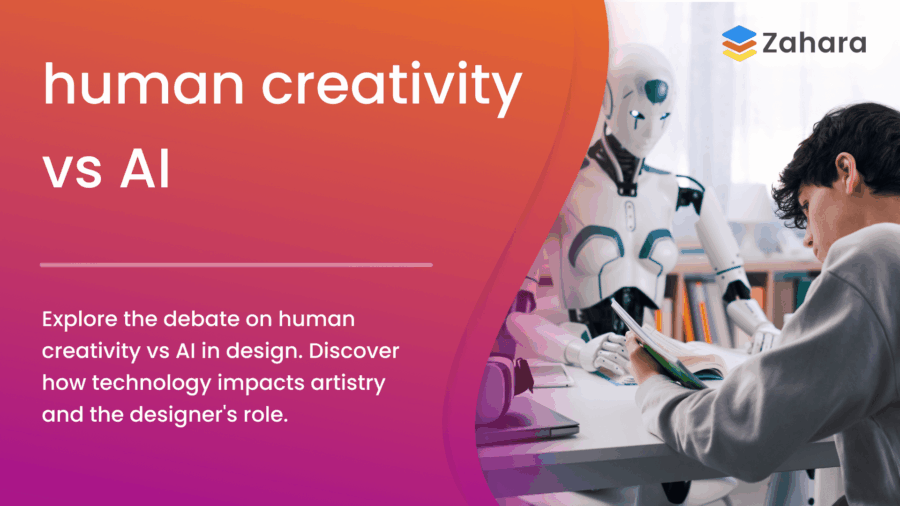About the Author
Where Did Those 5 Years Go?
It’s 2025, and AI isn’t just some futuristic buzzword anymore. It’s woven into daily conversations, whether you like it or not. ChatGPT has quietly infiltrated every office on the planet, helping people reword their passive-aggressive emails so they sound slightly less blunt than they probably meant them to be.
AI isn’t just rewriting memos either — it’s wormed its way into politics, entertainment, every corner of life. It even made it into the White House. (Although I’m pretty sure Elon Musk and Donald Trump would rather we all forget about that bizarre, AI-generated toe-sucking video that got broadcast everywhere for a hot minute.)
Back in 2019, when I wrote my dissertation — ‘How Will the Use of Artificial Intelligence Affect the Role of the Designer in a Future Society?’ — AI still felt like a storm you could hear rumbling, but not yet see. Sure, there were the usual sci-fi doomsday scenarios and yes, The Terminator got a mention. How could it not?
What none of us realised, at least not fully, was how fast it would all come crashing in. Not with killer robots marching down the street — but with AI slipping quietly into inboxes, workflows, headlines, and everyday decisions. It didn’t announce itself. It just became normal — before anyone had time to really think about what it meant.
But while all that noise was happening, something much bigger changed too. Not just how we work — how we think about creativity itself.
Rehashed Designs at Great Speed
If you looked at the headlines from the last few years, you’d be forgiven for thinking that AI had already cracked creativity. Endless outputs, infinite variations, polished mockups at the click of a button. It’s faster, cheaper, and more relentless than any junior designer you could ever hope to hire.
But the deeper you look, the more obvious it becomes: most of what it makes isn’t invention. It’s remix. Shuffling ideas inside the boundaries it’s been trained on. Real creativity — the transformational kind — still belongs to us.
Bauhaus didn’t happen because someone remixed old ideas faster. It happened because someone stood up, looked at the world, and decided the old ways didn’t fit anymore.
It came from frustration. Rebellion. A refusal to accept that tradition was all there was.
That’s the line AI hasn’t crossed — and maybe never will.
It can remix. It can polish. It can suggest.
But the raw, messy, brilliant instinct to start again — to invent — still sits with human hands.
As the tools get faster, cheaper, louder, and the flood of generated noise grows, the real power will sit with the people who can still step back, cut through it, and say, “No — this way instead.” Not just faster.
Not just shinier.
Different.
Better.
Human.
The Shift from Creator to Curator
Today, AI isn’t a cool idea you drop into a keynote. It’s already baked into your workflow, running in the background whether you admit it or not. Jump onto Relume and AI maps your wireframes faster than you can brief a junior. Fire up Lovable and you’ve got a working site before you’ve even made it back from the bar with your pint.
As I’ve already said, I didn’t think it would happen this fast. I thought we’d have a few more years — a slow build before the wave broke.
Maybe the engineers deep in the labs knew what was coming.
Maybe the VCs in Silicon Valley — sat on beanbags, microdosing hallucinogenics, mid-blood transfusion from the office “blood boy” — had it all mapped out.
But from where I was sitting, it felt like waking up halfway through a Christopher Nolan film — wondering how we got here and what timeline we were even on, while the project deadlines, briefs, and client expectations just kept moving like nothing had changed.
In the middle of that noise, what separates great work from forgettable work hasn’t changed.
It’s still taste.
It’s still judgement.
It’s knowing what to cut, not just what to create.
Same system. Different starting point.
The real value isn’t in producing more options.
It’s in recognising what’s worth building — and giving it the human touch that only care, craft, and real attention can bring.
And we already know this instinctively, from other parts of life.
We’ve seen this before. Look at fashion.
It’s why someone spends £5,000 on a hand-cut Italian suit instead of grabbing something mass-produced off the rack.
It’s not about technical perfection.
It’s about the feeling stitched into every seam — knowing a human touched it, shaped it, cared enough to get the small things right.
That’s the line design is walking now.
Not just polished. Not just functional.
It has to feel human. It has to carry meaning. Otherwise, it won’t last.
And if you’re wondering whether I saw this coming — I did, in a way.
When I wrote my dissertation back in 2019, I said designers would have to move from creators to curators.
I just didn’t realise how fast it would happen — or how loud the noise would get.
The Luddites weren’t wrong to fear change.
They just misunderstood what would survive.
Craft didn’t vanish.
It adapted.
Same with us.
Using Intelligence Intelligently
The tools have changed. The pace has changed. But the real work — the thinking, the care, the craft — hasn’t gone anywhere.
Working in design today isn’t about building more screens, more flows, more features — just because you can.
It’s about stepping back, cutting through the noise, and making sure what you build feels human — and actually solves something real.
How we use AI inside our process matters. And just as much, how we build AI into the products themselves matters too.
Both sides need the same discipline: thoughtfulness, clarity, and a respect for what people actually need — not just what sounds impressive.
Of course I use AI. It speeds up the rough work — mapping ideas, testing flows, clearing clutter early.
We’ve built it into Zahara too — not to show off, but to free up time for the parts that still need real thought.
But AI isn’t magic. It’s a tool, and like any tool, it’s only useful if it solves the right problem.
Too often, it gets bolted onto products just to win a keynote crowd.
We’ve all seen it: the chatbot no one needs, the predictive dashboard that adds more friction than value.
This isn’t the keynote stage.
It’s the real world — where design has to work properly, and users don’t care how clever something sounds, only whether it helps them get their work done.
Sometimes the best thing you can build is something that stays out of the way — clearing clutter, making the real work easier, not louder.
That’s where AI belongs: supporting decisions, sharpening the human part, not drowning it out.
In a world of auto-generated noise, the work that still matters is the work that still feels human — where form follows function, and beauty follows clarity.
The systems that make sense without explaining themselves.
The things that feel right because they were built properly from the start.
That’s the work we care about.
That’s what we build toward at Zahara.
And it’s what still makes the difference — every time.


